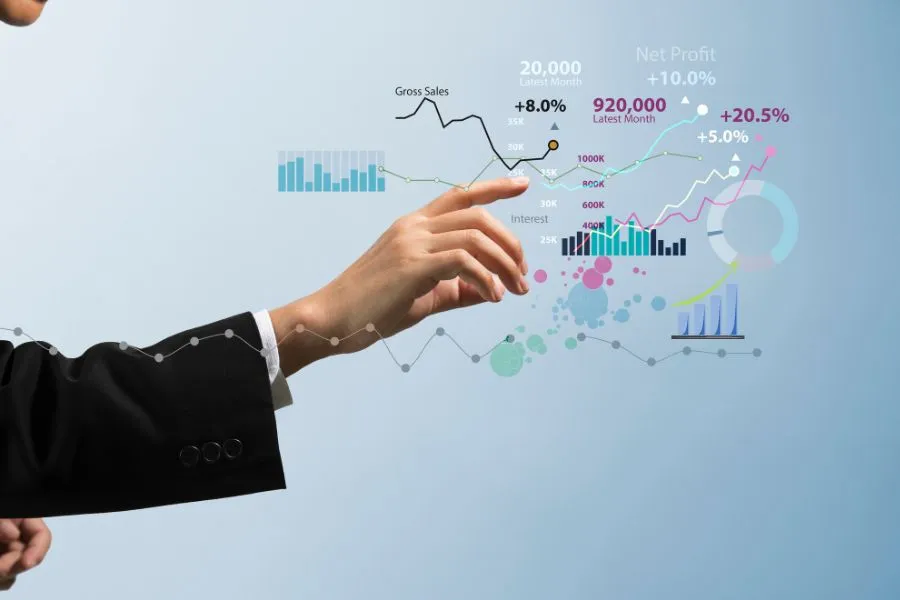Dashboard Design for Financial Analytics
Financial analytics is a very important aspect of any organisation that intends to make sound decisions for the improvement of the organisation. It is in this process that a good dashboard comes in handy since it is an efficient visual and interactive interface to financial information. In the next section, we look at some guidelines and recommendations on how to design a dashboard for financial analytics.

Key Elements of a Financial Analytics Dashboard
Clarity and Simplicity
Intuitive Layout: The layout should be intuitive, with a clean design that avoids clutter. Users should be able to find relevant information quickly without needing extensive training.
Consistent Visuals: Consistency in colours, fonts, and design elements helps users focus on the data rather than the design itself.
Essential Metrics
Key Performance Indicators (KPIs): Include essential KPIs like revenue, profit margins, expenses, and ROI. These give information on the position of the firm in regards to its financial status.
Trend Analysis: Incorporate trends over time for revenues, expenses, and profits. Trend lines and comparisons help identify patterns and potential issues.
Interactive Features
Drill-Down Capabilities: Users should be able to click on summary data to view more detailed information. This functionality helps in deeper analysis and understanding of underlying factors.
Filters and Segmentation: Allow users to filter data by various dimensions such as time periods, departments, or geographical locations. This makes the dashboard adaptable to different analytical needs.
Real-Time Data
Live Updates: Ensure the dashboard displays real-time or near-real-time data. Financial decisions often need to be made quickly, and outdated information can lead to poor decision-making.
Data Integration: Integrate data from various sources like ERP systems, CRM systems, and external market data providers to give a comprehensive view.
Visualisation Tools
Graphs and Charts: Use a variety of graphs and charts, such as bar charts, line graphs, and pie charts, to present data in an easily digestible format.
Heatmaps and Gauges: These tools can be particularly useful for highlighting areas of concern or interest, such as budget variances or performance against benchmarks.
Best Practices in Dashboard Design
User-Centric Design
Know Your Audience: Have an idea of who will be using the dashboard and centre the design towards them. Executives might prefer high-level summaries, while analysts may need more detailed data.
Ease of Use: Design with the end-user in mind. Ensure the dashboard is user-friendly and doesn't require technical expertise to navigate.
Focus on Actionable Insights
Highlight Key Findings: Use visual cues like colour coding or icons to draw attention to critical insights that require immediate action.
Contextual Information: Provide context for the data, such as benchmarks or industry averages, to help users interpret the information correctly.
Performance Optimization
Speed and Efficiency: Ensure the dashboard loads quickly and performs efficiently. Slow performance can frustrate users and hinder its effectiveness.
Scalability: Design the dashboard to handle increasing amounts of data as the organisation grows. Scalability ensures long-term usability.
Regular Updates and Iterations
Continuous Improvement: Regularly update the dashboard based on user feedback and changing business needs. Iterative design ensures the dashboard remains relevant and useful.
Training and Support: Provide training and support for users to help them get the most out of the dashboard. Well-informed users are more likely to leverage the dashboard effectively.
A well-designed financial analytics dashboard is a powerful tool for any organisation. By focusing on clarity, essential metrics, interactivity, and user-centric design, businesses can turn raw financial data into actionable insights. Regular updates and continuous improvement will ensure the dashboard remains a vital asset in the organisation's decision-making arsenal. Embracing these principles will lead to better financial oversight, strategic planning, and overall business success.
Active Events
3 Must Have Projects On your CV to Get into Data Analysis
Date: April 29, 2025 | 7:00 PM(IST)
7:00 PM(IST) - 8:10 PM(IST)
2753 people registered
Transforming Development: The AI Edge in Full Stack Innovation
Date: May 1, 2025 | 7:00 PM(IST)
7:00 PM(IST) - 8:10 PM(IST)
2811 people have registered
Bootcamps
Data Science Bootcamp
- Duration:4 Months
- Start Date:May 10, 2025
Data Analyst Bootcamp
- Duration:4 Months
- Start Date:May 10, 2025
